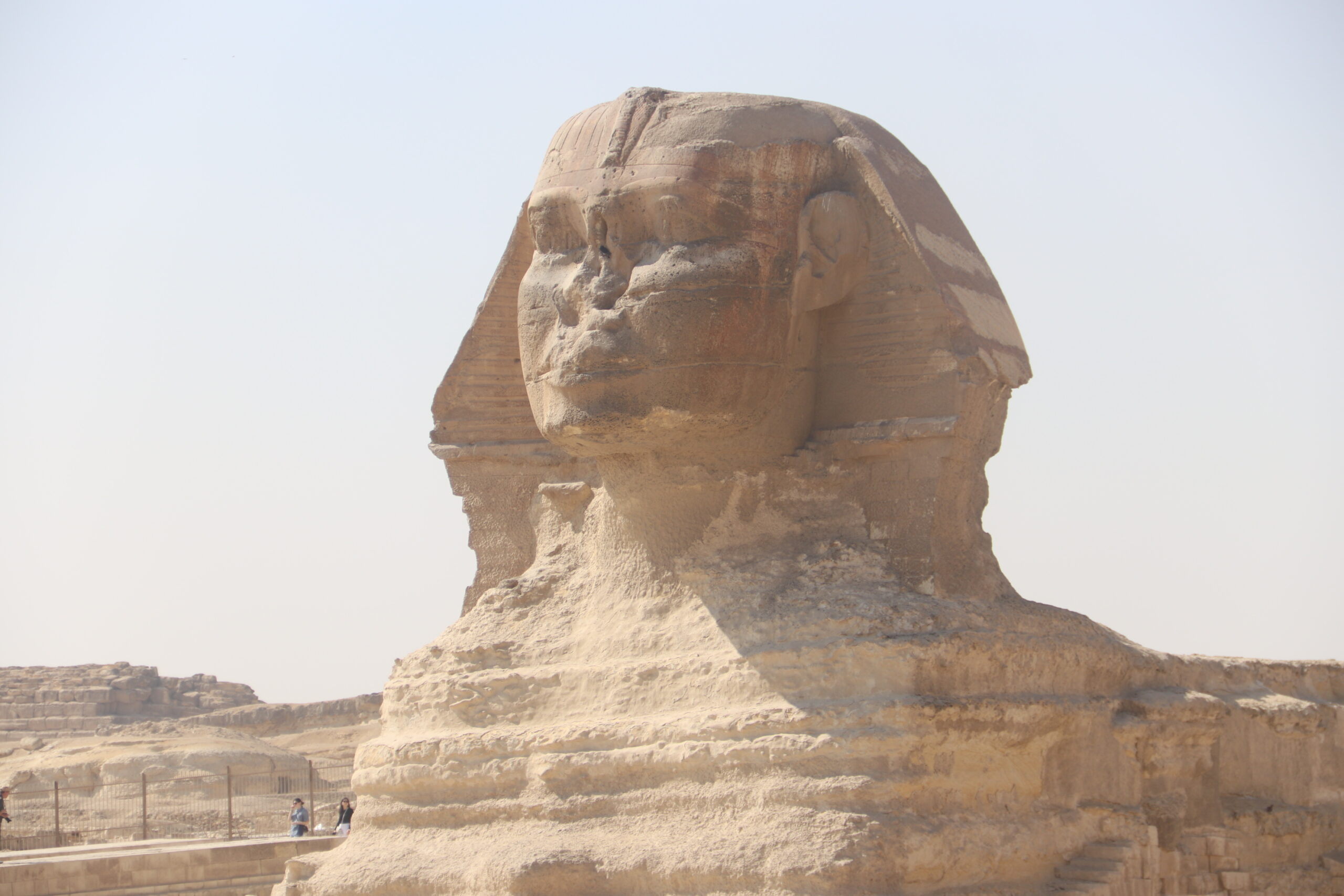When visitors arrive at the Giza plateau to explore the majestic Sphinx, they are presented with a wealth of information. The crucial detail that stands out is the absence of any claim or historical account in Egyptian history regarding the creator of the great Sphinx. This enigma remains unresolved.
In 1992, a paper by Boston University Geology Professor Robert M. Schoch suggested that the Great Sphinx of Giza was carved between 5000 and 7000 BC. Schoch’s analysis of the Sphinx’s degradation led him to attribute the weathering to precipitation. While Egyptologists typically credit the Fourth Dynasty pharaoh Khafre (ca. 2520 BC) with the Sphinx’s construction, Schoch’s early dating was met with skepticism. Despite criticism, some geologists like Dr. J.A. Harrell and Dr. K.L. Gauri have presented alternative views supporting the conventional Fourth Dynasty origin of the Sphinx.
Harrell credited the deterioration of the Sphinx and the nearby areas to the alleged “wet-sand” theory. This hypothesis suggests that the limestone, exposed and buried under layers of moist sand, has undergone chemical weathering. Nevertheless, upon closer examination, the methods described by Harrell to support the saturation of accumulated sand within the Sphinx enclosure do not hold up. Consequently, the wet-sand hypothesis is widely considered to be implausible.
The study conducted by Gauri and colleagues offers an overview of the various degradation features found on the body of the Sphinx and surrounding areas. These features are attributed to the combined impact of sub-surface groundwater movement and chemical weathering. Nevertheless, I believe that while these processes play a significant role, they may not fully explain all the degradation features observed within the Sphinx enclosure.
Colin D. Reader has conducted an analysis of the geology, geomorphology, and surface hydrology of the Giza necropolis. This study has resulted in a new timeline for the site’s development. By examining the evolution of stone masonry in ancient Egypt, he has successfully aligned the geological and archaeological data. This has allowed for a better understanding of the construction of the Sphinx within the historical framework of Dynastic Egypt.
Gauri conducted a thorough geological mapping of the Sphinx enclosure, focusing on the geology of the Upper Mokattam Limestones. These limestone formations, which were used in the construction of the Giza necropolis and also form the foundation of the area, have been extensively studied by other researchers [6, 7, 8]. The topography of the original ground surface at Giza was influenced by the south-easterly dip of the strata, which had an inclination of 5° to 7°. As a result, the Sphinx is situated at the eastern edge of the plateau, in a lower-lying position.
The strata uncovered at the Sphinx have been categorized into three sections. The first section, known as Member I, is composed of robust and long-lasting reefal limestone, which can be seen throughout the majority of the Sphinx enclosure’s foundation. The lower areas of both the Sphinx’s body and the western sections are made up of Member I strata, with the height of the quarried limestone increasing as it moves towards the northwest. The entire northern side of the Sphinx is comprised of Member I limestones.
Studying the area’s construction considering 4th-century architecture, Mark Lehner concluded that the hydrology of the site reveals that the degradation within the Sphinx enclosure suggests that the Sphinx was excavated and the Sphinx temple was originally constructed before Khufu’s early Fourth Dynasty development at Giza. The spatial connections between “Khafre’s” causeway, the Sphinx, and Khufu’s quarries further support the notion that the causeway and the Sphinx were built prior to Khufu’s quarrying activities. The significant placement of the proto-mortuary temple in close proximity to the causeway implies that this structure might have been involved in the early development of the site.
Based on the degree of erosion observed on the western Sphinx exposures and the historical evidence of stone usage in ancient Egyptian architecture, it is plausible to argue that the establishment of the site coincides with the rise of sun worship in ancient Egypt. Consequently, the excavation of the Sphinx and the construction of the other components of this solar-cult complex are provisionally dated to the latter part of the Early Dynastic Period.



